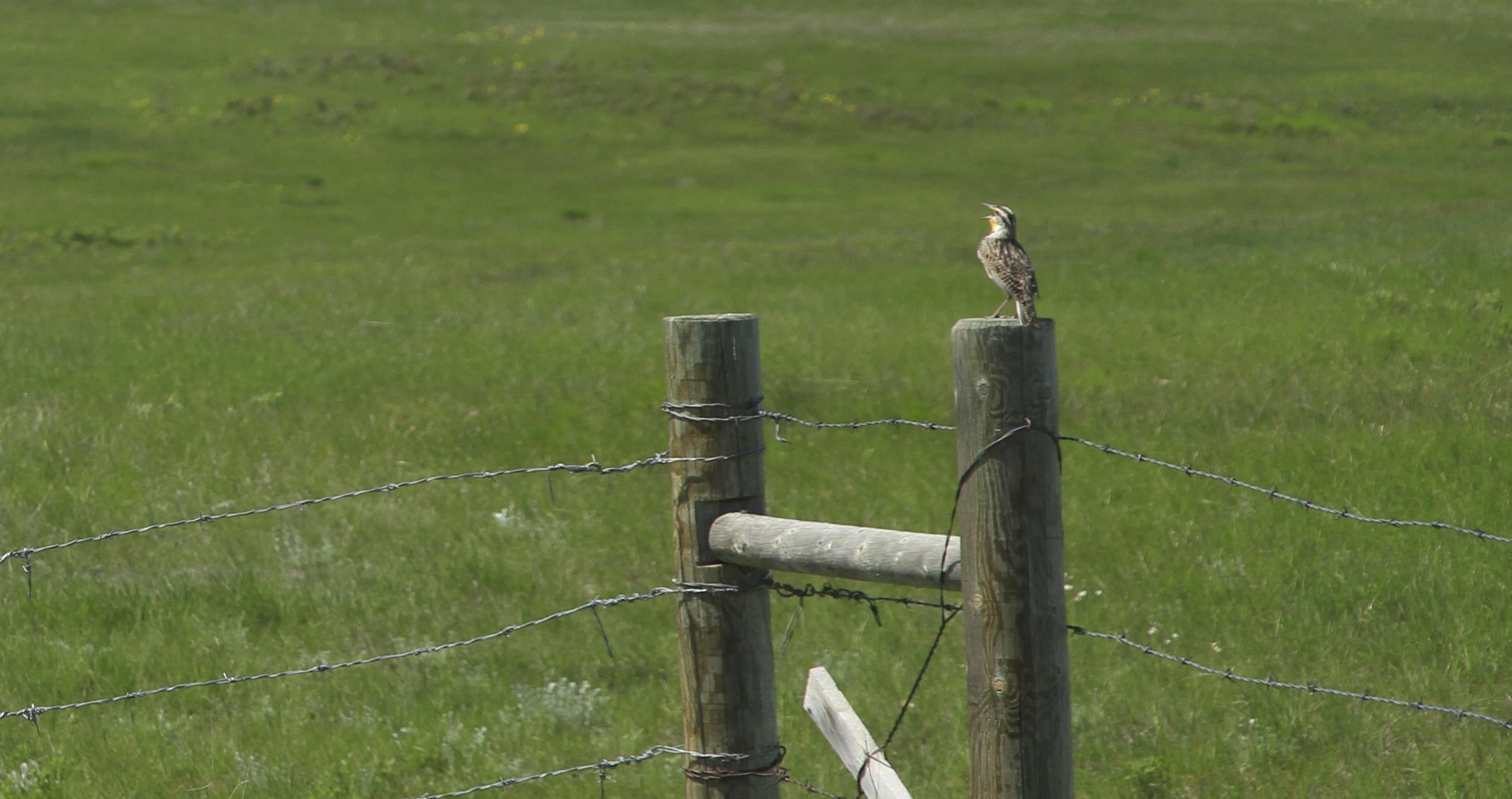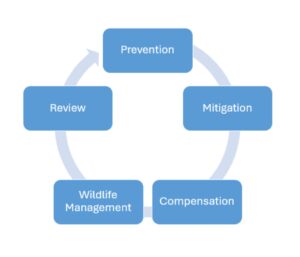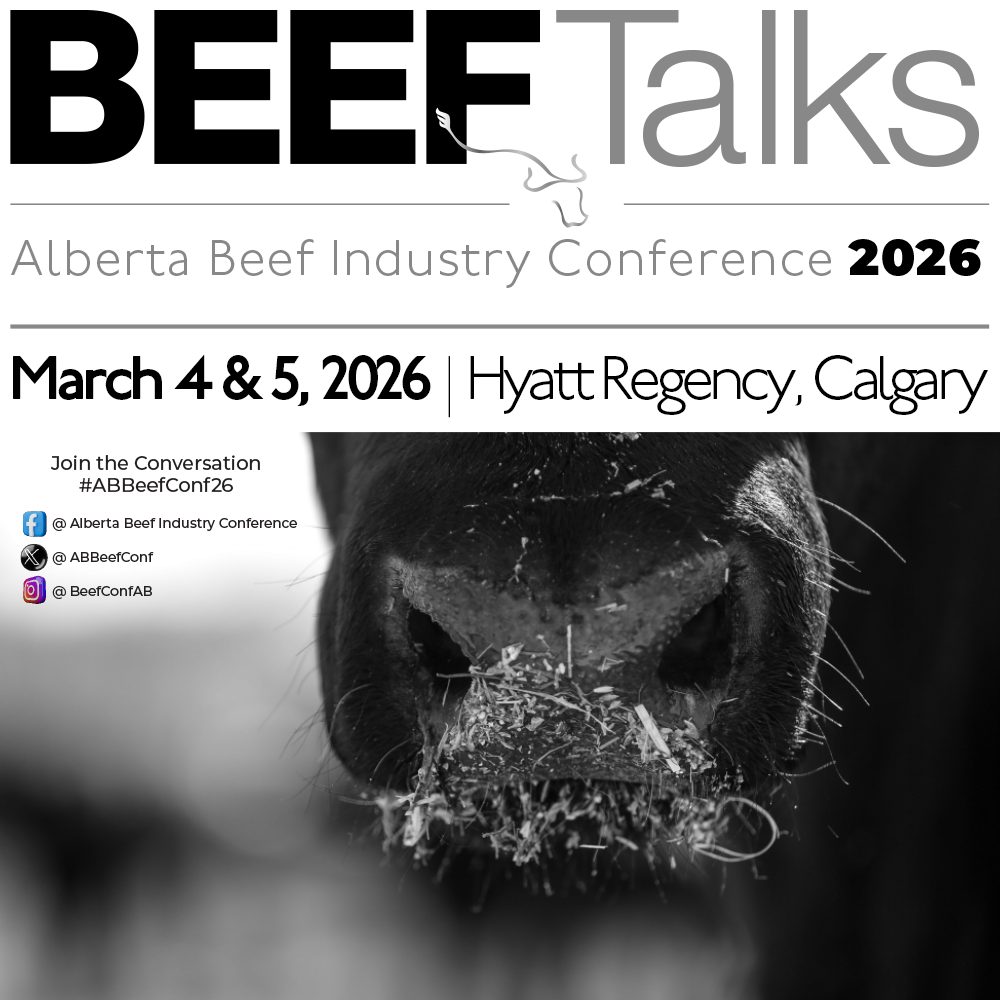AB Direct - Steers
Rail: ---
AB Direct - Heifers
Rail: ---
US Trade- Steers
Rail: 495.00 del
US Trade - Heifers
Rail: 495.00 del
Canadian Dollar
0.06

Cultivating success: Moving forward with on-farm wildlife conflicts
Sharing the landscape with wildlife and making a prosperous farming or ranching operation can often be challenging. From hungry waterfowl, to small livestock losses, there are many possible conflicts and it takes awareness, knowledge and cooperation to forge a successful path.
In Alberta, the human-wildlife conflict program consists of five inter-related parts: Prevention (actions taken to prevent damage), Mitigation (actions taken to reduce the frequency or severity of damage), Compensation (a financial safety net to reduce the negative costs of damage), Wildlife Management (establishment of sustainable wildlife population objectives and strategies for allocation and control) and periodic Review (examination of and consultation about relevance and effectiveness of programs and exploration of potential changes). All of these program elements are influenced by the social, economic and environmental outcomes that Albertans desire.

The five inter-related parts of the human-wildlife conflict program.
Alberta is a major player in local, provincial, national and world agricultural markets. Current information shows that Alberta’s human population has now reached five million people, an increase of at least 64 per cent in the last 25 years. Alberta is a major player in the national beef industry with more than four million head making up around 40 per cent of the nation’s beef. There are now more than 170,000 sheep on 2000 farms. Alberta has 68 million acres under private ownership, 60 per cent of the nation’s arable land and 100,000 acreages. There are an estimated 300,000 commercial bee colonies in the province. And the list of impressive agricultural achievements goes on!
And then there is Alberta’s incredible wildlife resources. Alberta hosts hundreds of thousands of migratory waterfowl who travel twice a year on two migratory bird flyways over Alberta, stopping and refuelling along the epic journey. Current estimates of other wildlife populations show Alberta is home to an estimated 45,000 elk, 135,000 moose, 250,000 white-tailed deer, 200,000 mule deer, 40,000 black bears, 1100 grizzly bears, 4000 wolves, 2000 cougars and 300,000 coyotes. And that’s just the larger wildlife! This is a busy province! So, it’s not surprising that such a diverse landscape has conflict.
Human-wildlife conflict systems in Alberta date back to the original agricultural settlement period. Think large scale predator/“pest” control with toxicants and gopher tail and crow egg bounties that kept rural kids busy and pocket change in their jeans. With the evolution of values, animal husbandry, cropping and agricultural product storage practices among many factors, today’s efforts to manage human-wildlife conflict look quite different. A modern system that emphasizes up-front investment in wildlife management population objectives and prevention/mitigation actions should result in less conflict, less financial and time loss and therefore the resultant desire for compensation actions.
In Alberta, there are many levels of participation and cooperation in the human-wildlife conflict program delivery. The list of these organizations includes at this time:
- Individual producers
- Municipal governments (agricultural service programs)
- Provincial government (wildlife management, human-wildlife conflict, public safety, agriculture)
- Federal government (Sustainable Canadian Agriculture Partnership – agricultural insurance funding for provinces, migratory bird management)
- Provincial agencies (Agricultural Financial Services Corporation and the Alberta Conservation Association)
Agriculture in Alberta, out of necessity and due to the constant influence of factors that affect the bottom line, has always shown resilience and adaptability. These historical strengths and the continued modern emphasis on continual learning and field-testing, has an important place in helping to address agricultural conflicts with wildlife. In particular, dedicated efforts to anticipate and respond to emerging issues help to provide early solutions to conflicts. However, if Alberta continues to see the expected human population increases, diverse settlement patterns and expanded agricultural land uses, indeed, more partnerships, more cooperation and more innovation will be necessary. Are we ready to embrace that challenge?
This article originally appeared in The Blade—the official publication of the Central Alberta Forage and Livestock Association (CAFLA). Featuring stories, insights, and on-farm innovations from across Central Alberta, The Blade shares information on diverse forage and livestock practices. Read the latest issue and learn how to become a CAFLA member at cafla-ab.ca.

